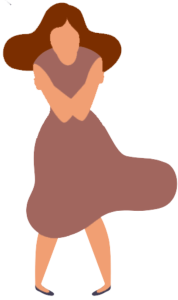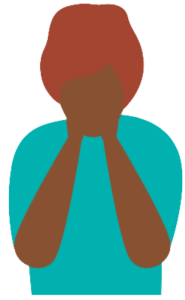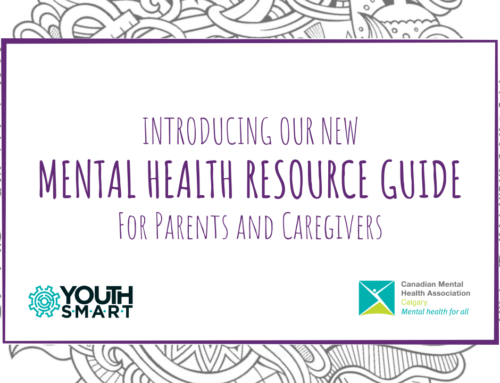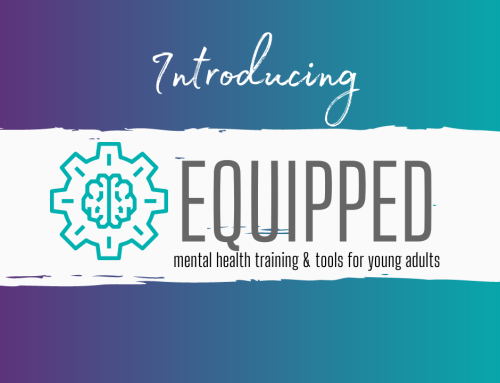There are many different types of mental illnesses and they affect everyone in different ways. With each type of mental illness, people may have unique experiences and challenges. Health professionals divide mental illnesses into groups based on the emotions, thoughts, and behaviours a person is experiencing. Some groups of mental illness include:
Anxiety Disorders
Anxiety disorders are all related to anxiety. They may include excessive and uncontrollable worry, strong fears around everyday things or situations, unwanted thoughts, panic attacks, or fears around a past scary situation. Anxiety disorders are the most common mental illnesses and they can create barriers in people’s lives.
Is stress just another form of anxiety?

Your body reacts to these changes with short-term physical, mental, and emotional responses. Anxiety does not need to be triggered by a change in your life and can be persistently felt by whoever is experiencing it.
Examples of anxiety disorders:
- Generalized Anxiety Disorder (GAD) – Having what seems like an uncontrollable sense of worry and tension throughout your mind and body. This anxiety can happen anytime without any triggers.
- Obsessive-Compulsive Disorder (OCD) – Taking part in repetitive behaviours in order to control obsessive thoughts and/or actions. Participating in these behaviours only provides temporary relief. Unfortunately not doing these “ritual” type behaviours increases anxiety.
- Post-Traumatic Stress Disorder (PTSD) – An anxiety that develops after experiencing or witnessing a terrifying event. Flashbacks, nightmares, and severe anxiety are symptoms of PTSD.
- Social Anxiety Disorder – Overwhelming anxiety and self-consciousness in social scenarios. (e.g. ordering food at a restaurant, speaking at casual or formal events with other people, eating around others, drinking around others, etc.)
Childhood Onset Disorders
This is a group of mental illnesses that start to affect people when they are young, though some people are not diagnosed until they’re older.
Example of a childhood-onset disorder:
- Attention Deficit Hyperactivity Disorder – Formerly known as Attention Deficient Disorder (ADD), children and youth with ADHD may have trouble paying attention, controlling impulsive behaviours (may act without thinking about the consequences), or be overly hyperactive.
Eating Disorders

Examples of eating disorders:
- Anorexia – People with anorexia avoid eating types of foods, and severely restrict their calorie intake to maintain their weight, although they are underweight.
- Bulimia – People with bulimia will consume large amounts of food and will purge themselves to compensate for the food they ate.
- Binge eating – Similar to bulimia, people who binge eat will consume large amounts of food, and will use purging behaviours (vomiting, excessive exercise, etc.) to compensate for the binges.
Mood Disorders

Examples of mood disorders:
- Major Depression – An extended period of extreme sadness that affects a person’s ability to sleep, eat and complete day-to-day functions.
- Bipolar Affective Disorder – Mood swings that alter from extreme highs (mania) to extreme lows (depression).
- Seasonal Affective Disorder (SAD) – A type of depression, SAD is triggered by the change of seasons and most commonly begins in late fall.
Personality Disorders

Examples of personality disorders:
- Borderline Personality Disorder – A person with this disorder exhibits impulsive and risky behaviours. Characteristically, they are fragile, sensitive, and unbalanced in their emotions. They have up and down mood swings, and display frequent episodes of intense anger or feelings of abandonment.
- Narcissistic Personality Disorder – A person with this disorder believes that they are special, and more important than others. Characteristically, they are arrogant, insensitive and apathetic. They have a failure to recognize others needs and feelings beyond their own.
Being aware of different types of mental illness is not to single anyone out. Remember that mental illness can affect anyone at any time.
If you think you or someone you know may be struggling with mental challenges, remember there is professional help available.
For youth-centric Peer Support services, please click here.

You are not alone. There is help.
If you cannot find someone you trust who is willing to support you, dial a crisis line right away at 403-266-HELP (4357) All crisis lines are confidential.


